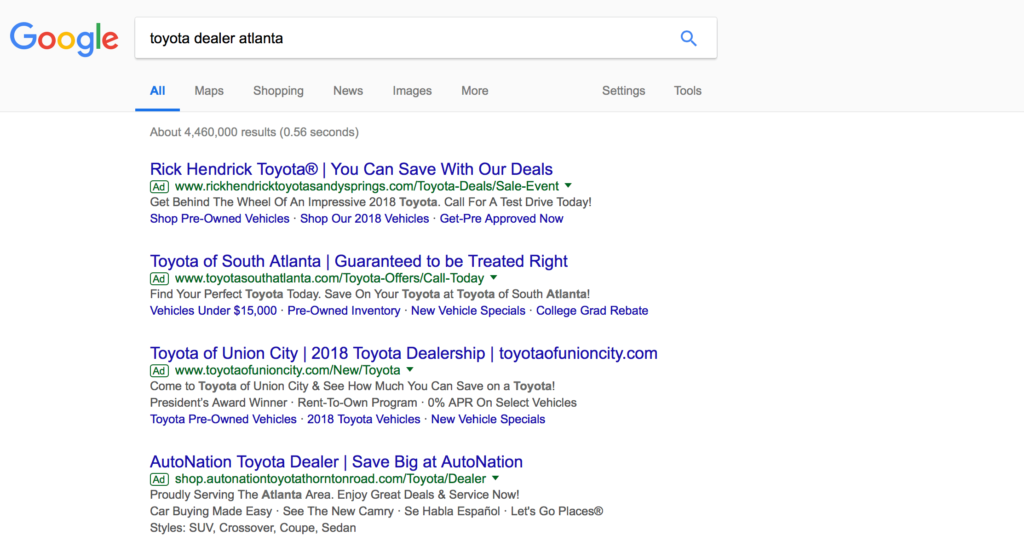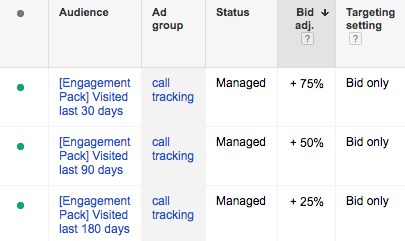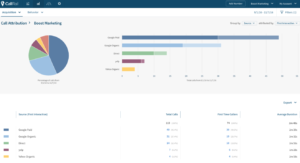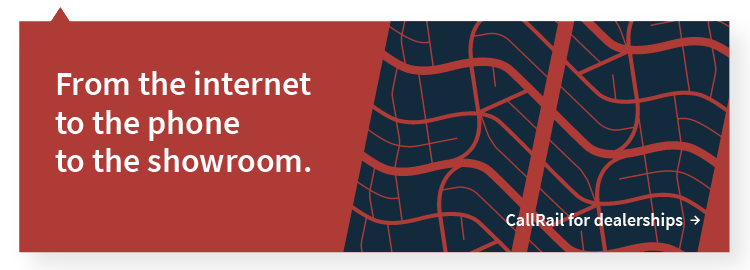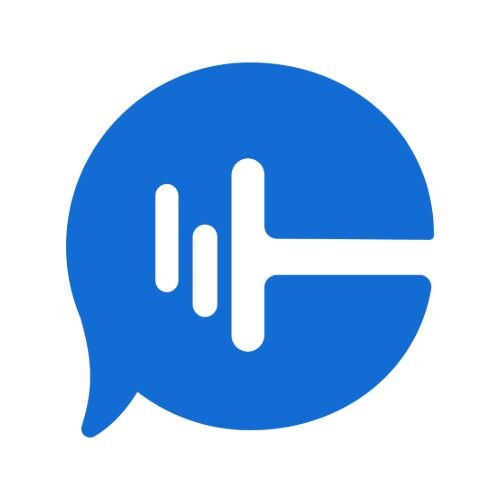The automotive industry is fiercely competitive. Dealers and original equipment manufacturers (OEMs) spend billions every year on print, TV, and radio ads. The problem is that a lot of these campaigns aren’t necessarily driving showroom traffic, and even if they are, there’s no good way to track showroom traffic back to the campaigns driving it.
Because of this, we’ve seen dealers shift towards spending more on paid search and SEO. In fact, the U.S. automotive industry is expected to spend $7.8 billion on paid digital advertising by 2017. In an industry plagued by shoddy attribution, PPC and SEO give dealers more insight into how their ad dollars are driving car sales.
Compared to a TV spot or a 30-second radio jingle, we know exactly how much site traffic each campaign generates and exactly how those site visitors behaved. Because we have this insight, we’re able to optimize our ad spend in these channels and better track our results.
Budget/ funnel allocation
Focus on showing up in the funnel when your prospects are most likely looking to buy. For a car dealer doing PPC, this means maximizing your brand and regional spend, even if you’re showing up in organic for some or all of these searches. Brand searches would be queries like “Bob’s Ford Dealership,” while regional queries could include your brand name, the region or city you’re located in, and the OEM make your dealership provides.
Looking for PPC budget tips? Try our calculator.
Not serving an ad for these searches is a mistake for three main reasons:
1. Even if you’re showing up in the no. 1 organic slot for a search term, you’re still missing out on clicks by not showing up in the ads.
Per a Google study from 2011: you could be missing out on 55% of clicks. Now this study is from 2011, and Google is biased to incentivize ad spend, but keep in mind what the search results page looks like these days:
With the advent of site link extensions, callout extensions, structured snippets, enhanced location extensions, expanded text ads and the new SERP format that removes ads from the right sidebar of the results page and adds a 4th ad to the page, the organic results are even further below the fold.
2. These are the most qualified searches you can get.
Until car shopping goes completely online, prospects still need to make their way to the showroom to buy. These prospects have done their research, know what cars they’re interested in, and are looking for a dealership to go to.
3. Not bidding on brand and regional terms will allow competitors to take the ad slots instead.
Automotive is a competitive space. Not taking the opportunity to own the top of the page for inexpensive brand terms leaves the opportunity open for competitors.
Focus on high-intent keywords
After you’ve made sure that you’re present for all brand and regional searches, your next focus should be on the highest-intent, low-funnel terms. These are the longer searches like “buy a 2011 ford focus” or “lease a new Toyota Highlander.” There’s still value in bidding on shorter, higher-funnel queries like “Ford” or “Toyota,” but only after we’ve exhausted opportunities to spend elsewhere.
Another tool that can help with focusing your ad dollars on the most qualified searches is called Remarketing Lists for Search Ads (RLSA). What this allows you to do is bid differently on search traffic based on how the prospect has interacted with your business in the past. If they’ve visited your site within the last 30 days, 90 days, etc.
Using RLSA we can choose to bid more aggressively on this traffic because we know it’s more valuable. We can also change our bid amounts on different segments of that list, (for example, if they visited 4+ pages of the site, or if they visited a financing page, etc.).
Provide value-centric ad copy
All this work would be for naught with bad ad copy. Sure we’d get clicks, but we wouldn’t receive as many and they’d be less likely to convert once they’re on the site.
Take a look at the following examples:
If someone searched for “F-150 lease,” which of the above ads seems more likely to be clicked? One is packed with features and incentive offers, while the latter does include the leasing price, but otherwise contains uninspired, bland messaging.
While there’s always value in testing different ads – when competing with so many similar ads, it’s important to differentiate yours with VDP specific info that will be re-iterated once the prospect lands on the page. For those of you just getting into automotive PPC, VDP stands for Vehicle Detail Page. These are an important part of any dealership’s website and get a lot of attention in discussions around attribution in online automotive marketing.
A clever headline or description can also help differentiate your ad from the pack, but unless the messaging matches your landing page, the disconnect between the ad copy and landing page copy will hurt your conversion rate.
When writing ad copy for automotive, focus on the selling points as they pertain to the particular ad group or campaign. If the ad is in a regional campaign, explain your proximity to X or Y landmark or how you’re 1 mile from the airport. If it’s a branding campaign, focus on how your dealership has specific value ads. Have you been in business for a long time? Is your dealership family-run? Do you offer any dealership-specific promotions not available at other OEM locations? If you’re in a model-level campaign be sure to speak to the specific features that likely enticed the prospect to that model in the first place. Highlight price points and incentive offers.
Track calls and onsite activity
Automotive can be a nightmare from an attribution standpoint, which makes it that much more important to track everything you can. Without proper tracking, automotive PPC goes from a valuable investment where you can track ROI, to another 30-second radio spot you hoped generated some engaged site activity.
Did someone click through to a VDP from an SRP? Did they click the “Get Directions” button after they viewed three cars? All these are important intent indicators that you should be tracking in order to optimize your campaigns.
Most importantly, you want to be tracking the phone calls generated by these campaigns.
You’ll want to have individual tracking numbers for all of your campaigns. That way you can track and group the phone calls to see which campaigns are getting the most activity. Additionally, with a service like CallRail, you can track which keywords generated phone calls and adjust your campaigns around those keywords in order to drive sales. This visitor tracking works for both SEO and PPC.
If you’re not tracking phone calls generated via PPC, you’re missing out on a valuable piece of the data that can help inform future spending. Once you know that your campaigns generate X number of calls per month, you’ll feel more confident investing additional budget into the channel.
In addition to visitor tracking, call recording is another valuable feature you’ll want to implement in your campaigns. Is call volume going up, but sales are flat? Call recording lets you listen to sales calls to make sure your team is fielding calls the way they should be.
Using CallScore you can even automatically score calls as good or bad leads so you’re not wasting time following up with unqualified calls.
Automotive PPC can be tough, but with proper tracking, great ads, and the right focus, it gets easier.




